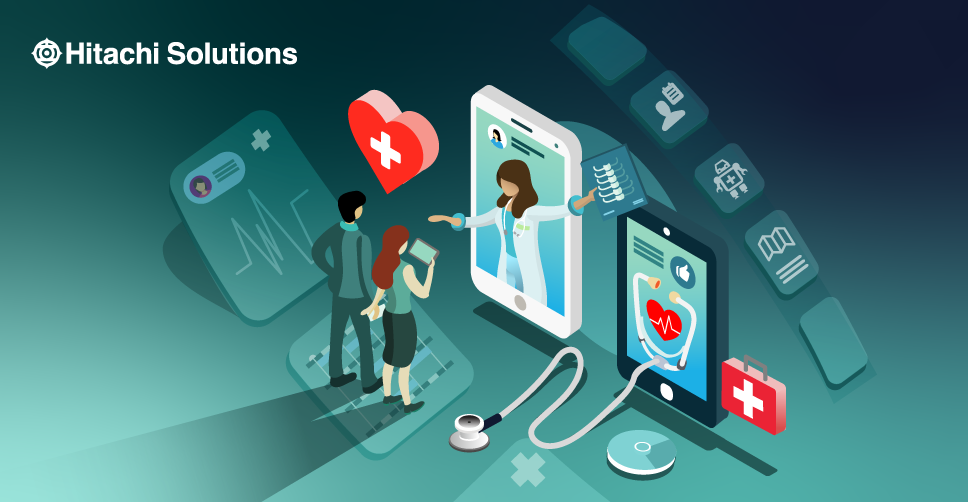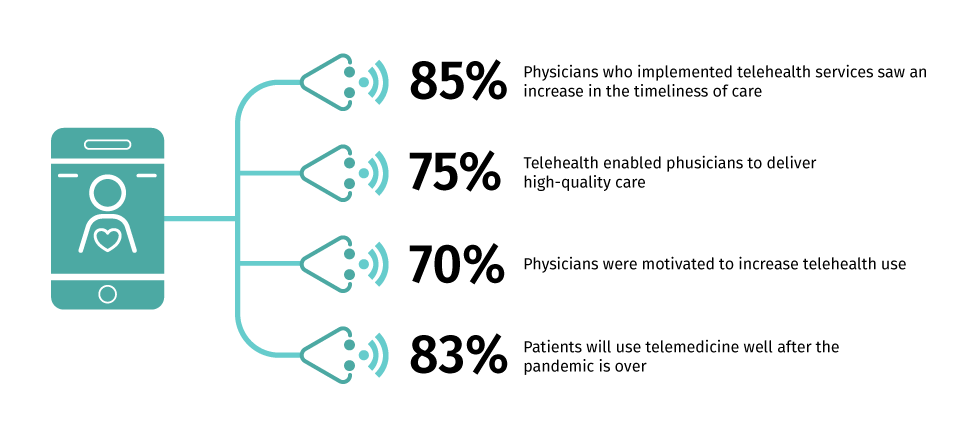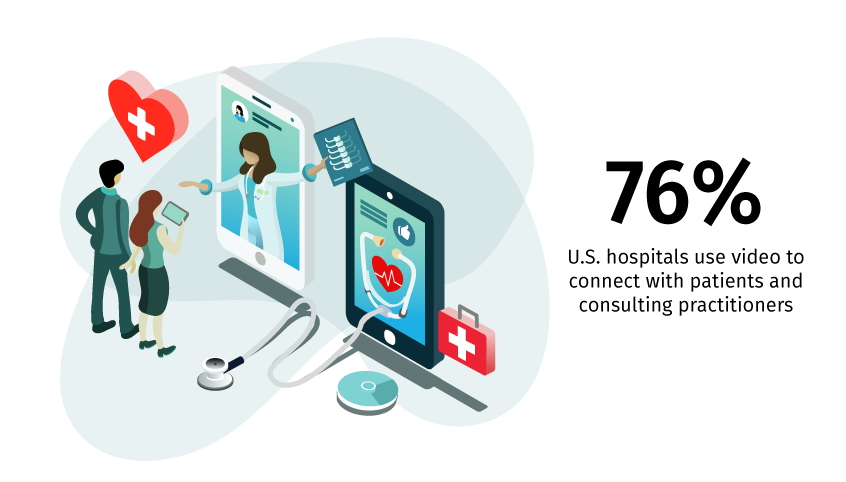

Field Service for Home Health & Microsoft Cloud for Healthcare Workshop
3 Week Workshop | Pricing Varies
Download the OfferLet’s be honest: The traditional healthcare experience — with all of its red tape, piles of paperwork, overcomplicated processes, and analog engagements — no longer serves the modern healthcare consumer. But, as they say, where one door closes, another one opens — a digital one, to be exact.
Like many other industries, healthcare was already in the midst of a slow-but-steady transition to digital platforms and services prior to the emergence of COVID-19. However, with pandemic-related precautions significantly limiting (and, in some cases, completely restricting) in-person interaction, healthcare providers had to find new, often digitized means of delivering comprehensive care to patients, which accelerated that transition. This led to rapid adoption of telehealth technology, online patient portals, contactless bill payment, and more.
In other words, it opened a digital front door — one that’s expected to remain open well after COVID case counts have declined and in-person services have resumed, and that will shape the future of the healthcare industry as a whole.
What is the Digital Front Door?
The digital front door is an omnichannel engagement strategy that leverages the latest technology to create more convenient and connected patient journeys and serve the needs of the modern healthcare consumer. It derives its name from both the figurative entry point into the patient journey and the idea that, with the round-the-clock service capabilities a digital front door strategy can offer, a healthcare provider’s door is always open.
The digital front door represents a radical shift in thinking within the healthcare sector, driven by both patients and providers. Younger generations, in particular, are dissatisfied with traditional care, instead of seeking providers that offer digital capabilities and virtual care. This has prompted significant changes within the healthcare industry — changes that were then cemented by the pandemic. Research from the U.S. Department of Health and Human Services’ Office of the Assistant Secretary for Planning and Evaluation shows a 63-fold increase in telehealth utilization during the pandemic, from approximately 840,000 visits in 2019 to 52.7 million visits in 2020.

Both physicians’ and patients’ response to telehealth has been overwhelmingly positive. The American Medical Association reports that 85% of physicians who implemented telehealth services saw an increase in the timeliness of care; 75% said that telehealth enabled them to deliver high-quality care, and over 70% said that they were motivated to increase telehealth use.

On the patient side of things, a survey from Doctor.com shows that 83% of patients anticipate using telemedicine well after the pandemic is over.
To make a long story short, telehealth — which Mayo Clinic defines as “the use of digital information and communication technologies […] to access health care services remotely” — is here to stay. In order to deliver the type of experiences that healthcare consumers are looking for, providers require a strong digital front door strategy.
But what, exactly, does that look like? We’re glad you asked.
The Crossroads Between Patient-Centric Design & Technology
Given its emphasis on telemedicine and digitization, one might assume that the success or failure of a healthcare provider’s digital front door strategy is solely dependent on its ability to invest in the latest-and-greatest technology.
That isn’t entirely the case. Although technology is essential to any digital front door strategy, the transition also requires a deep understanding of patients and their needs and patient-centric user experience (UX) design in order to be truly successful.
If you’ve ever encountered a patient portal that was challenging to navigate, a healthcare application with frustratingly few options, or a poorly designed chatbot that left you with more questions than answers, you know firsthand that it isn’t enough to just stand up an app or portal with no real thought to how patients might actually use them.
In fact, doing so can actively alienate patients: According to a study from Cedar, 41% of patients reported that they’d consider changing providers for a better digital experience, with younger adults (ages 18–24) four times more likely to make the switch compared to individuals over the age of 65.

In order for their digital front door strategy to be truly effective, healthcare providers need to ensure that their telehealth user experiences are designed with patients’ needs, preferences, and behaviors in mind. This requires providers to understand everything from which demographics they serve to what motivates their patients; to be mindful of patients’ concerns and empathetic to their pain points, and to be aware of any barriers to medical access their patients may face.
Once a provider has achieved this, it can use this information to design telehealth services and digital experiences that are accessible, secure, and intuitive; enhance patient adoption, and help promote optimal patient outcomes. Patient-centric UX design will also inform which technologies healthcare providers choose to use.
Here are a few foundational solutions that support telehealth and help define a digital front door strategy:
- Chatbots: Chatbots — sometimes known as virtual agents — are computer programs that follow scripted logic to provide automated service or guidance. A growing number of chatbots now leverage an advanced form of artificial intelligence (AI) known as natural language processing (NLP) to understand, interpret, and even learn from interactions with humans, which enable them to convincingly replicate human language.
The self-service applications for chatbots in the healthcare industry, especially those of the NLP variety, are seemingly endless; common examples include digital symptom checkers, online appointment scheduling, automated data collection, online bill payment, prescription refills, and more.
One of the leading benefits of implementing chatbot technology is that most programs have clearly defined escalation paths. Should an inquiry or issue exceed a chatbot’s capabilities, it will automatically escalate the request to the next available live representative, allowing for a more seamless patient service experience. - Online Portals: Self-service has become a leading trend across most industries, so it comes as little surprise that online portals — more specifically, patient portals — are integral to the digital front door. Patient portals are designed to serve as a one-stop shop for all of healthcare consumers’ needs, enabling them to review their medical records, access lab results, review their healthcare benefits and coverage, fill out forms, make payments, update contact information, contact their provider, and more.
- Video Conferencing: Secure, HIPAA-compliant video conferencing software has quickly become one of the most essential telehealth technologies, with the American Hospital Association reporting that 76% of U.S. hospitals use video to connect with patients and consulting practitioners.
Designed to give patients and providers a safe, remote way to connect, video conferencing platforms — and telehealth technology, in general — offer substantial benefits to individuals with disabilities because they eliminate common barriers to accessing in-person medical appointments. The convenience of video appointments is also appealing to individuals with demanding schedules, making it easier for patients to find time to receive quality care. - Automation: Manual patient communications have long been a pain point within the traditional healthcare experience. For one, they require a significant number of healthcare personnel to manage — personnel that providers simply might not have, especially in light of industry-wide staffing shortages.

They also introduce the risk of human error. Something as simple as entering the wrong information into a patient’s medical records or forgetting to follow up with them after an appointment can threaten the patient-provider relationship — or worse, jeopardize a patient’s health. These manual communications only become more complex as healthcare providers incorporate new systems and services to accommodate the demand for telemedicine.
Fortunately, automation eliminates many of these risks, allowing for more consistent, high-quality patient communications across platforms and channels, all without overextending healthcare personnel. Using robotic process automation (RPA), providers can send automated appointment reminders, pre-appointment registration forms, follow-up questionnaires, and routine check-ins via phone, text/SMS message, email, or in-app communication. Patients can even select their preferred communication method, allowing for a level of personalization not possible through manual communication.
RPA also helps streamline record-keeping by automatically entering information from patient consent forms, clinical questionnaires, doctor’s notes, and more into a patient’s medical history. This ensures that medical records are comprehensive and free from human error to the benefit of both patients and providers.
Finally, RPA simplifies medical billing by generating more accurate billing statements, giving patients the option to pay online, streamlining the claims process, ensuring proper documentation, reducing providers’ costs to collect, and more.
Key Benefits to the Digital Front Door [For Patients & Providers]
An effective digital front door strategy offers numerous advantages for both patients and providers.
For Patients:
- The digital front door offers patients the flexibility to engage with their healthcare providers on their own terms, using the channel(s) with which they’re most comfortable.
- The digital front door shifts the patient-provider dynamic in patients’ favor by enabling them to be more selective about which providers they see, which helps patients feel more empowered and in control of their health.
- Telehealth technology makes quality medical care accessible to all patients, regardless of ability, and helps ensure consistency in treatment and follow-up, leading to improved clinical outcomes.
- Patient portals and mobile apps provide patients with a consolidated view of their healthcare experience, including their medical history, insurance status, prescriptions ready for refill, and pending payments — all without having to interact with a live representative.
- Telehealth platforms simplify the patient experience, making it easier to navigate. Without the traditional hurdles to clear, patients can instead focus on understanding their conditions, thereby increasing treatment plan accessibility and adherence.
- Automation and other related technology reduce the amount of manual paperwork a patient must fill out before seeing their healthcare provider, saving them valuable time and effort.
- The digital front door encourages a “door is always open” mentality, meaning patients have access to round-the-clock care, medical records, and payment services, even outside traditional business hours.
Watch our short video to see a Patient Mobile App in action!
For Providers:
- Telehealth technology such as patient portals, mobile applications, and chatbots enable providers to deliver “always-on” service while simultaneously reducing their cost-to-serve.
- Automation enables healthcare personnel to spend less time on manual tasks and instead focus on providing patients with quality care. Not only does this reduce patient wait times and lead to better patient outcomes; it also reduces the risk of physician burnout and enables providers to do more with existing headcount.
- Automation also improves coordination between care teams, ensuring that specialists have access to the right information, at the right time, which results in more consistent patient experiences and more connected healthcare journeys.
- Providers can even leverage automation — including health campaigns, group messaging, and self-service scheduling — to help patients who have delayed care get back on track.
- The digital front door empowers providers to personalize communications and care options to the individual patient. When care is attuned to patients’ actual needs, providers are more likely to increase engagement, satisfaction, and retention, as well as attract new patients.
- The digital front door makes it easier for providers to receive feedback from patients in the form of automated surveys and to collect anonymized data, all of which help providers assess the impact and efficacy of existing systems, processes, and services for continuous improvement efforts.
A Digital Front Door Scenario
Meet Spencer. After seeing the same primary care provider for several years, Spencer has decided it’s time to make a change. They start their search online, where they encounter a digital advertisement for a healthcare provider called Whole Health Services.
After doing a little more research and reading positive reviews from current patients, Spencer goes to the Whole Health Services website, where they’re able to search through the provider’s network of physicians, filtering by specialization, location, available services, whether they’re accepting new patients, and more.
Once Spencer has found a generalist whose qualifications and availability align with their needs, they sign up to be a new patient and fill out a digital intake form, entering their full name, home address, phone number, email address, and insurance information. On the back end of the website, Whole Health Services’ customer relationship management platform automatically captures and stores these details in a secure, HIPAA-compliant database.
Spencer also has the ability to schedule their appointment online using Whole Health Services’ self-scheduling functionality. Once they’ve selected a date and time, Spencer receives a confirmation email and, a few days before their appointment, they receive an email reminder.
On the day of their appointment, Spencer is able to skip the waiting room — having already filled out their intake forms online — and immediately see their physician. During the appointment, the physician uses their tablet to take case notes electronically and, after hearing some of Spencer’s concerns, prescribes them a new medication. Since the physician’s tablet is connected to Whole Health Services’ telehealth platform, all of this information is automatically added to Spencer’s medical records. Before leaving the doctor’s office, a front desk clerk helps Spencer schedule a follow-up appointment for a few months’ later.
Later that same day, Spencer logs into Whole Health Services’ secure patient portal to review their medical records and pay the bill for their appointment. They also receive a text message notifying them that their new prescription has been filled and is ready for pickup at their local pharmacy. A week after the appointment, Spencer receives an email from Whole Health Services asking about their experience, and whether they have any follow-up questions for their physician.
Open the Door with Hitachi Solutions
Designing and implementing a digital front door strategy is no overnight achievement. It requires careful process mapping; a comprehensive understanding of both patient and employee experiences; a holistic view of the patient journey across all channels and touchpoints; insight into a healthcare provider’s competitive standing and adherence to industry standards; telehealth solutions expertise; and — of course — patient-centric UX design.
Fortunately, Hitachi Solutions is here to help with all of it.
We’ve built an entire practice around helping organizations design user experiences that both meet customer needs and support business goals, including collaborative UX design workshops and design sprints. And for healthcare providers that either currently use or intend to move to the Microsoft platform, our deep technical expertise and close strategic relationship with Microsoft make us uniquely qualified to create a digital front door strategy that leverages Dynamics 365, the Azure cloud, the Power Platform, Microsoft Cloud for Healthcare and more.
There’s no time like the present to open the door to better patient experiences and engagement — contact Hitachi Solutions today to get started.


